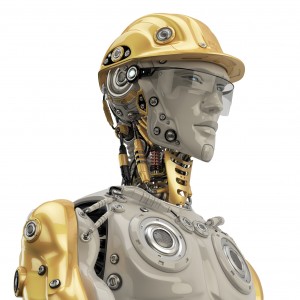Male Chauvinist Machines

Yanks win last night?
Do men and women think differently? If they do, who should develop artificial intelligence? As we develop AI, should we target “feminine” intelligence or “masculine” intelligence? Do we have enough imagination to create a non-gendered intelligence? What would that look like?
First of all, do the genders think differently? According to Scientific American, our brains are wired differently. As you know, our brains have two hemispheres. Male brains have more connections within each hemisphere as compared to female brains. By contrast, female brains have more connections between hemispheres.
Men, on average, are better at connecting the front of the brain with the back of the brain while women are better at connecting left and right hemispheres. How do these differences influence our behavior? According to the article, “…male brains may be optimized for motor skills, and female brains may be optimized for combining analytical and intuitive thinking.”
Women and men also have different proportions of white and gray matter in their brains. (Click here). Gray matter is “…primarily associated with processing and cognition…” while white matter handles connectivity. The two genders are the same (on average) in general intelligence, so the differences in the gray/white mix suggest that there are two different ways to get to the same result. (Click here). Women seem to do better at integrating information and with language skills in general. Men seem to do better with “local processing” tasks like mathematics.
Do differences in function drive the difference in structure or vice-versa? Hard to tell. Men have a higher percentage of white matter and also have somewhat larger brains compared to women. Perhaps men need more white matter to make connections over longer distances in their larger brains. Women have smaller heads and may need less white matter to make the necessary connections — just like a smaller house would need less electrical wire to connect everything. Thus, a larger proportion of the female brain can be given over to gray matter.
So men and women think differently. That’s not such a surprise. As we look ahead to artificial intelligence, which model should we choose? Should we emphasize language skills, similar to the female brain? Or local processing skills, similar to the male brain? Should we emphasize processing power or information integration?
Perhaps we could do both, but I wonder how realistic that is. I try to imagine what it would be like to think as a woman but I find it difficult to wrap my head around the concept. As a feminist might say, I just don’t get it. I have to imagine that a woman trying to think like a man would encounter similar difficulties.
Perhaps the best way to develop AI would involve mixed teams of men and women. Each gender could contribute what it does best. But that’s not what’s happening today. As Jack Clark points out, “Artificial Intelligence Has A “Sea of Dudes’ Problem”. Clark is mainly writing about data sets, which developers use to teach machines about the world. If men choose all the data sets, the resulting artificial intelligence will be biased in the same ways that men are. Yet male developers of AI outnumber females by a margin of about eight-to-one. Without more women, we run the risk of creating male chauvinist machines. I can just hear my women friends saying, “Oh my God, no!”
McKinsey and The Decision Villains

Just roll the dice.
In their book, Decisive, the Heath brothers write that there are four major villains of decision making.
Narrow framing – we miss alternatives and options because we frame the possibilities narrowly. We don’t see the big picture.
Confirmation bias – we collect and attend to self-serving information that reinforces what we already believe. Conversely, we tend to ignore (or never see) information that contradicts our preconceived notions.
Short-term emotion – we get wrapped up in the dynamics of the moment and make premature commitments.
Overconfidence – we think we have more control over the future than we really do.
A recent article in the McKinsey Quarterly notes that many “bad choices” in business result not just from bad luck but also from “cognitive and behavioral biases”. The authors argue that executives fall prey to their own biases and may not recognize when “debiasing” techniques need to be applied. In other words, executives (just like the rest of us) make faulty assumptions without realizing it.
Though the McKinsey researchers don’t reference the Heath brothers’ book, they focus on two of the four villains: the confirmation bias and overconfidence. They estimate that these two villains are involved in roughly 75 percent of corporate decisions.
The authors quickly summarize a few of the debiasing techniques – premortems, devil’s advocates, scenario planning, war games etc. – and suggest that these are quite appropriate for the big decisions of the corporate world. But what about everyday, bread-and-butter decisions? For these, the authors suggest a quick checklist approach is more appropriate.
The authors provide two checklists, one for each bias. The checklist for confirmation bias asks questions like (slightly modified here):
Have the decision-makers assembled a diverse team?
Have they discussed their proposal with someone who would certainly disagree with it?
Have they considered at least one plausible alternative?
The checklist for overconfidence includes questions like these:
What are the decision’s two most important side effects that might negatively affect its outcome? (This question is asked at three levels of abstraction: 1) inside the company; 2) inside the company’s industry; 3) in the macro-environment).
Answering these questions leads to a matrix that suggests the appropriate course of action. There are four possible outcomes:
Decide – “the process that led to [the] decision appears to have included safeguards against both confirmation bias and overconfidence.”
Reach out – the process has been tested for downside risk but may still be based on overly narrow assumptions. To use the Heath brothers’ terminology, the decision makers should widen their options with techniques like the vanishing option test.
Stress test – the decision process probably overcomes the confirmation bias but may depend on overconfident assumptions. Decision makers need to challenge these assumptions using techniques like premortems and devil’s advocates.
Reconsider – the decision process is open to both the conformation bias and overconfidence. Time to re-boot the process.
The McKinsey article covers much of the same territory covered by the Heath brothers. Still, it provides a handy checklist for recognizing biases and assumptions that often go unnoticed. It helps us bring subconscious biases to conscious attention. In Daniel Kahneman’s terminology, it moves the decision from System 1 to System 2. Now let’s ask the McKinsey researchers to do the same for the two remaining villains: narrow framing and short-term emotion.